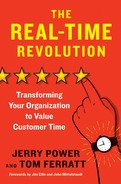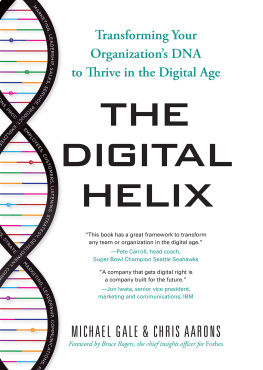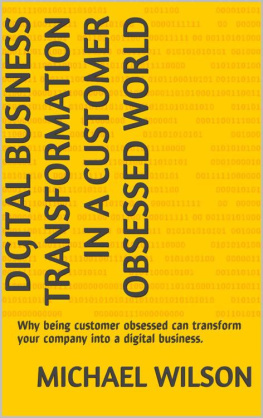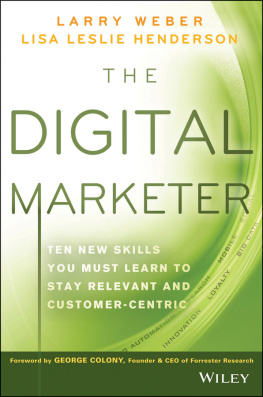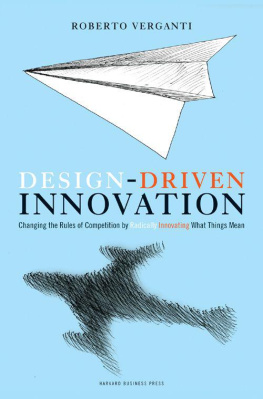Copyright 2015 by Peter Hinssen. All rights reserved. Except as permitted under the United States Copyright Act of 1976, no part of this publication may be reproduced or distributed in any form or by any means, or stored in a database or retrieval system, without the prior written permission of the publisher.
ISBN: 978-0-07-184870-1
MHID: 0-07-184870-3
The material in this eBook also appears in the print version of this title: ISBN: 978-0-07-184871-8, MHID: 0-07-184871-1.
eBook conversion by codeMantra
Version 1.0
All trademarks are trademarks of their respective owners. Rather than put a trademark symbol after every occurrence of a trademarked name, we use names in an editorial fashion only, and to the benefit of the trademark owner, with no intention of infringement of the trademark. Where such designations appear in this book, they have been printed with initial caps.
McGraw-Hill Education eBooks are available at special quantity discounts to use as premiums and sales promotions or for use in corporate training programs. To contact a representative, please visit the Contact Us page at www.mhprofessional.com.
All illustrations are by Vera Ponnet of Saflot.
TERMS OF USE
This is a copyrighted work and McGraw-Hill Education and its licensors reserve all rights in and to the work. Use of this work is subject to these terms. Except as permitted under the Copyright Act of 1976 and the right to store and retrieve one copy of the work, you may not decompile, disassemble, reverse engineer, reproduce, modify, create derivative works based upon, transmit, distribute, disseminate, sell, publish or sublicense the work or any part of it without McGraw-Hill Educations prior consent. You may use the work for your own noncommercial and personal use; any other use of the work is strictly prohibited. Your right to use the work may be terminated if you fail to comply with these terms.
THE WORK IS PROVIDED AS IS. McGRAW-HILL EDUCATION AND ITS LICENSORS MAKE NO GUARANTEES OR WARRANTIES AS TO THE ACCURACY, ADEQUACY OR COMPLETENESS OF OR RESULTS TO BE OBTAINED FROM USING THE WORK, INCLUDING ANY INFORMATION THAT CAN BE ACCESSED THROUGH THE WORK VIA HYPERLINK OR OTHERWISE, AND EXPRESSLY DISCLAIM ANY WARRANTY, EXPRESS OR IMPLIED, INCLUDING BUT NOT LIMITED TO IMPLIED WARRANTIES OF MERCHANTABILITY OR FITNESS FOR A PARTICULAR PURPOSE. McGraw-Hill Education and its licensors do not warrant or guarantee that the functions contained in the work will meet your requirements or that its operation will be uninterrupted or error free. Neither McGraw-Hill Education nor its licensors shall be liable to you or anyone else for any inaccuracy, error or omission, regardless of cause, in the work or for any damages resulting therefrom. McGraw-Hill Education has no responsibility for the content of any information accessed through the work. Under no circumstances shall McGraw-Hill Education and/or its licensors be liable for any indirect, incidental, special, punitive, consequential or similar damages that result from the use of or inability to use the work, even if any of them has been advised of the possibility of such damages. This limitation of liability shall apply to any claim or cause whatsoever whether such claim or cause arises in contract, tort or otherwise.
TO MY CHILDREN
The most amazing wonder of the network between Valentine and me.
The eyes through which I gaze at the world.
They have taught me more than any book I have ever read.
Aida and Loren, this book is for you.
CONTENTS
ACKNOWLEDGMENTS
I would like to thank all the people who were vital in making this book a reality: Ilse De Bondt, Jos Delameilleure, Nadia Del Rio, Mary Glenn, David Hayward, Ciel Jolley, Rick Judge, Marc Lerouge, Jim Lubinskas, Devanand Madhukar, Peter McCurdy, Luc Osselaer, Taunya Renson-Martin, Chantal Van de Ginste, Laurence Van Elegem, and Marianne Vermeulen.
Thanks to all the people who, directly or indirectly, have been an inspiration for me for this book: Jamie Anderson, Rob Goffee, Costas Markides, Michael Nowlis, Steven Van Belleghem, Sean Gourley, Mark Zawacki, Glenn Morgan, Mike McNamara, Bart De Crem, Wim De Waele, Bart Van Hooland, Andr Duval, Alex Brabers, Davy Kestens, Yoeri Roels, Gary Hamel, Thomas Leysen, Whitney Bouck, Walter De Brouwer, Luc Verhelst, Peter Vanderauwera, Tom Standage, Sofie Bruynooghe, Thierry Geerts, Peter Strickx, Steven De Smet, Steve Van Wyck, Kees Smaling, Fons Leroy, Rik Van Bruggen, Rene Steenvoorden, Philippe Gosseye, Philippe Rogge, Kosta Peric, Penni Geller, Paul Daugherty, Michael Kogeler, Vijay Gurbaxani, Luc De Vos, Lieven Haesaert, Johan De Geyter, Inge Geerdens, Jef Staes, Geert Noels, Peter Claes, Chris Van Doorslaer, Abdella Bouharrak, Bill Chang, Amanda Jobbins, Luc Bleyaert, and Adam Pisoni.
Special thanks go to my longtime business partners, Luc Osselaer and Fonny Schenck.
The publisher has, as far as possible, tried to respect all known copyright restrictions on the images. However, copyright owners who find that their rights have been violated may contact the publisher. All rights reserved. No part of this book may be reproduced in any form by any electronic or mechanical means without permission in writing from the publisher.
www.peterhinssen.com
PREFACE
WHY NETWORKS MATTER
Since I was a kid, Ive been obsessed with maps. I adore the layout of old maps depicting mountains and oceans, cities and roads. I find it fascinating how world history can be seen through the shifting borders of maps over time. But nowadays, what amazes me most is how old cartographers got it wrong.
One of my favorite examples is the way California has been depicted, having lived there for part of my childhood. For the longest time, travelers believed that California was an island, separate from the American mainland.
My favorite type of map is the road map, whether it shows layouts of city streets or depicts how railroads and highways, roads and turnpikes, lanes and pathways curve through the landscape of countries and continents. For me, the best part of the Lord of the Rings books is the amazingly intricate maps drawn by J. R. R. Tolkien, which let you follow the trail of the merry fellowship on their journey to Mordor.
But moving on from my hobbit habits, when you look more closely at the topology of maps, its clear that roads form a network. The infrastructure of how cities operate, their capacity and connections, tell the story of the economy and influence of a region. You can see which cities are at the heart of an economy and which are at the edge. You can understand how influential a town is, what its main economic arteries and roads are, and how it influences, stimulates, and feeds neighboring towns and hamlets.
I now spend countless hours poring over Google Maps and Google Earth. I love exploring regions that Ive visited or will visit, ogling the enormous beauty and complexity of the roads and canals, and the intricacy of the routes and freeways. All of this was made by man.
When it comes to the mountains and lakes, the volcanoes and harbors, the plateaus and cliffs, we had nothing to do with those. But all the rest, that was us. We created these networks that carry our cars, wagons, trucks, boats, buses, bicycles, and pedestrians. There was no grand plan, as is made obvious by the myriad twists and turns and the fractallike complexity of the network.
copied the idea. These pathways seem more logical than the rest of the infrastructure, which seems almost organic. But their impact is immense. The U.S. interstate system helped shape the United States into a world economic superpower and a highly industrialized nation.





